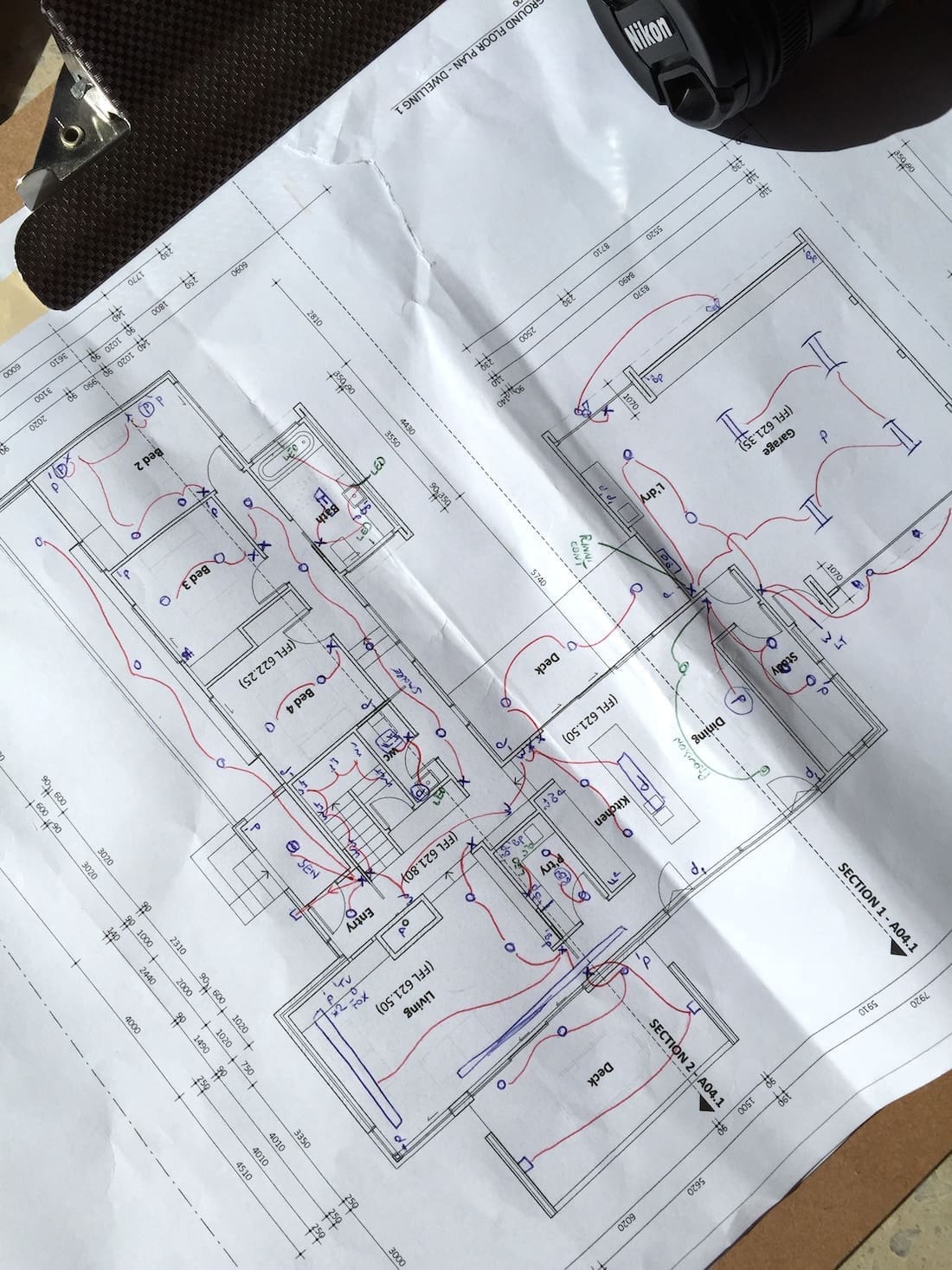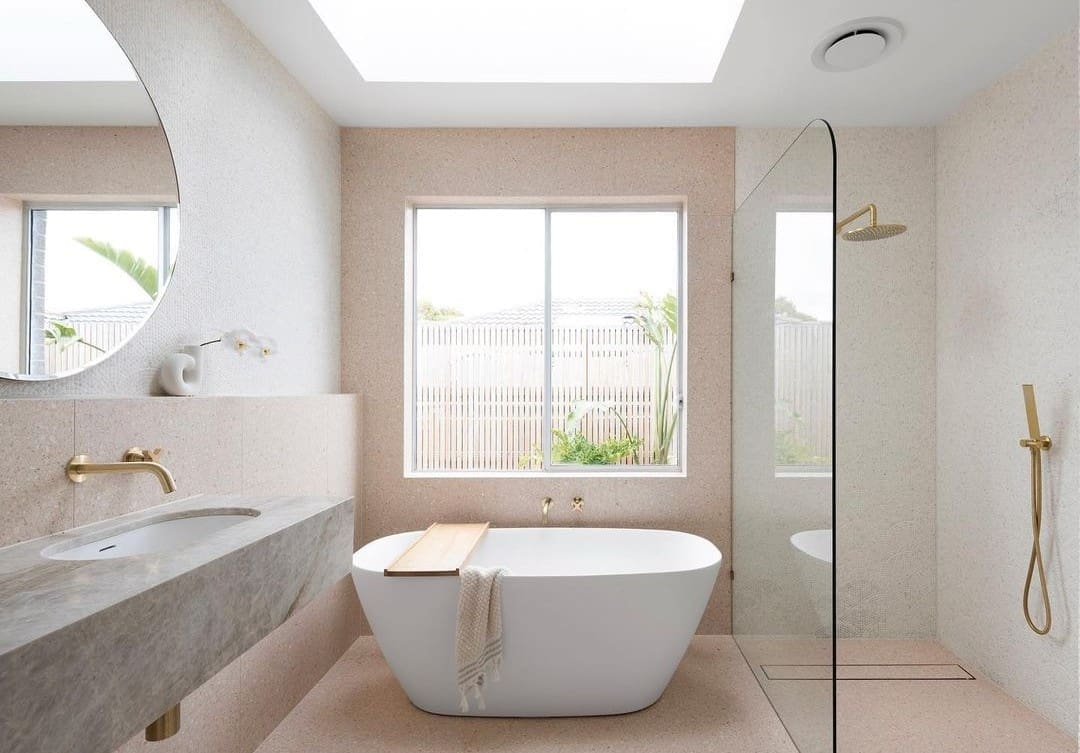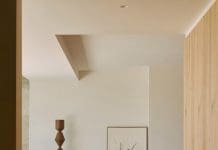When you’re planning a home renovation, understanding the layout of your space is essential. Knowing how to accurately measure and calculate the square footage or square metres of each room helps to better plan your design and stay within budget.
Calculating square space is the first step in creating a realistic plan for your renovation. This way, you can see in detail how much material you’ll need, such as flooring, paint or wallpaper, ensuring no costly surprises down the line. Your renovation’s success hinges on meticulous planning — don’t leave it to guesswork.
Thankfully it’s easier than you might think to accurately measure the square area and in this article we’ll cover everything you need to know! Using a reliable calculator for square footage/square metres will help make sure that you’ve covered all bases and can handle any challenges that come along with your home improvement project.
Related article: Managing household items during extensive renovations
Related article: Is your dream home actually insurable? 5 questions to ask post-reno

The concept of square metres / square footage
When undertaking a home renovation project, grasping the concept of square metres / square footage is fundamental. It’s the basis for estimating materials, costs, and timelines.
Your square space is simply the area of your space in square feet or square metres, depending on your metric. To calculate it, you’ll need to measure your room length and width.
Multiply these two measurements together to get your total square footage or square metres. This number can help you make accurate estimations for your renovation needs.
- Meticulous measurements: incorrect measurements can lead to inaccurate cost estimations or insufficient materials
- Space utilisation: your square area will guide you on spatially efficient designs or furniture arrangements
- Planning purposes: knowing the correct area will facilitate planning for essential services like heating, ventilation, or air conditioning
- Budget considerations: square space directly affects cost factor — typically the larger the area, the greater the budget you need for renovations.
When you’re prepared with precise measurements and a thorough understanding of your space, you’ll be better equipped to tackle your renovation projects. Plus, not only can you save on costs and time, you’ll also get the most functional and aesthetically beautiful renovation as you would have properly considered every square inch 😉
Gather your tools
Before starting any home renovations, ensure you have the proper tools. These include a tape measure, pencil, calculator or online tool for calculations.
Measuring square metres / square footage
Your objective should be understanding your home’s square metres or footage. For this, you’ll need your trusty tape measure. You’ll need to measure the width and length of your room… unless of course it’s triangular or circular in shape. Don’t worry, we share all the mathematical equations to measure a room below.
This Old House explains how a typical bedroom measures about 200 square feet or 18.5m2 on average. While averages can be helpful to get an estimate of your reno costs, it’s important to accurately measure your space.
Do the math
Once you’ve measured your given spaces in either feet or metres, you’ll do some arithmetic to get the area. Multiply length by width for each room or space.
This figure provides a solid basis to plan renovation work, materials needed and costs involved with precision and reliability.
Tips for success
To avoid costly mistakes during renovations, it’s important to always double-check measurements. This ensures that plans adhere to the actual specs of your home.
By accurately calculating the square area, you empower yourself with practical knowledge about the scale of home improvement tasks ahead.

Measure the room
To achieve accurate measurements, carefully assess every corner of the room. Furnishings, built-in shelves, and different room shapes can affect square metre calculations.
Calculate area
Determine the length and width of your room in your metric (either feet or metres). Multiplying these dimensions together will give you the total square area.
If your room is not rectangular, divide it into smaller rectangular sections. Measure these individually and sum the areas to determine overall square area.
Non-rectangular spaces
The process of calculation becomes a tad trickier for spaces bearing irregular shapes like L-forms and T-forms, or rooms with semi-circle arched walls.
You need to dissect such complex areas into geometric sections. Treat each as a separate entity, calculate their areas, then sum up for total square area.
The role of precision
Accuracy is crucial when measuring for renovations. Precise measurements can help minimise materials waste and ensure you have enough materials for your project.
Calculate area for shapes
Before embarking on your home renovation, calculate the area of different spaces. This gives you a proper understanding of the required materials and costs involved.
Certain rooms may have unique shapes, not always square or rectangular; hence, their area calculation methods would vary.
| Shape | Formula | Example |
| Square / rectangle | Length x width | If your room is 10 ft long and 12ft wide, the area is 120 sq ft. |
| Triangle | 0.5 x base x height | If your room base is 10 ft and height is 14ft, the area is 70 sq ft. |
| Oval | 3.14 x (radius a x radius b) | If your room radii are 4ft and 6ft, the area is approximately 75 sq ft. |
| Circle | 3.14 x radius2 | If your room radius is 5ft, the area is approximately 79 sq ft. |
Note: to calculate accurately, all dimensions should be measured from wall to wall at a floor level. Be sure to account for every nook of the room. You also need to consider obstructions like posts when calculating. You can learn more about how to do this here.
Precise measurement will help you make informed decisions and ensure a successful renovation project.
Account for unusable space
Your home may have spaces that are not feasible to remodel due to structural limitations or inaccessible areas. It’s a good idea to identify these ahead of time.
Identifying unusable areas
You should identify and measure all spaces where modification is unrealistic or impossible. These might include walls, built-in furniture, or fireplace surrounds.
Use floor plans
Floor plans often mark where beams and other structural elements make certain areas unusable. Existing house designs can be easily found online.
Professional consultation
If you find it challenging, professional consultations might be the way to go. Architects or builders can point out tricky spots in your layout.
Calculate accurately
Deducting these unusable spaces from your total square area will give a more accurate understanding of the space available for renovation expansion.

Convert units if necessary
If your measurements are in a meters instead of yards, or vice versa, first convert them into your metric. This ensures consistency and accuracy when calculating square area.
Use online converters for quick calculations. Remember, 1 meter equals approximately 3.28 feet, and 1 yard equals 3 feet exactly.
Double-check your conversions. Being precise at this stage can save you both time and resources in the long term of your renovation project.
- Conversion guidelines: use the exact conversion numbers for precision.
- Online tools: various web-based converters are available that provide instant, accurate results.
- Check twice: verifying conversions before applying them saves many post-construction corrections.
Your estimated square metres / square footage is a key factor when planning your home renovation project. It impacts cost estimates, material orders, and labour requirements.
Taking time to accurately calculate and convert units is an essential step towards a successful home renovation project. This process helps prevent miscalculations and keeps your project running on time and on budget.
Finalise your numbers
Completing successful renovations or home extensions starts with knowing your square area. This measure aids you when ordering the correct quantity of materials.
It’s not just about calculating size. You also need to factor in potential extra costs of labour and any unforeseen structural improvements.
- Measure your space: Check the dimensions of your room to calculate the square metres or square feet. Don’t forget to include cupboards, closets or other enclosed spaces.
- Determine material quantity: Based on your measurements, estimate the quantity of materials needed. A slight overestimation is better than running out.
- Consult a professional: If the process seems too complex, never hesitate to seek expert advice. They guarantee accuracy and provide helpful insights.
- Budget appropriately: Factor in additional costs such as labor and unexpected structural improvements. Always have a buffer in your budget for unexpected expenses.
Accurate figures not only ensure smooth renovation but also safeguard against unexpected hitches. It helps take the stress out of renovations by avoiding issues like running out of materials or ordering items that are too large for your space.
Taking time to finalise your numbers will lead to renovation success. It enables you to make insightful decisions that enhance efficiency for your project.

Seek professional help
When planning a home renovation, consider enlisting the expertise of construction professionals. They have the knowledge and experience to accurately calculating square metres / square footage.
Professionals can pinpoint aspects crucial to success that you might overlook. Their assistance will save you both time and potential future expenses.
- Avoid mistakes: Whether it’s misjudged measurements or overlooked factors, professionals help prevent costly errors.
- Reliable advice: They can offer guidance on materials and best practices based on your budget and project needs.
- In-depth expertise: Professionals understand building codes and structural requirements for safe renovations.
- Quality assurance: They provide peace of mind that work is done correctly, enhancing the value of your property.
Relying on a professional mitigates stress with an efficient approach, ensuring accurate measurements for your home renovation project. Embrace the peace of mind a professional brings to your renovation, knowing your dream home is well on its way to reality.
Now you’re ready to confidently measure and calculate square metres / square footage for a successful home renovation. If your project includes painting, use this tool to calculate how much paint you need. Best of luck on your remodelling journey.






